My backyard was just… there. Some grass, a grill, a couple of chairs sinking into the dirt – it wasn’t bad, it just wasn’t livable. Then I started seeing all these covered outdoor living spaces online, patios with real roofs, string lights, fans, even fireplaces, and something clicked. Why was I wasting all this square footage?
I didn’t want a fancy showroom. I wanted a functional, year-round space I’d actually use. Somewhere to work, eat, unwind, and host without worrying about the blazing sun, sudden rain, or clouds of bugs crashing the party.
So I built one.
This is everything I learned about covered outdoor living spaces—what to build, how much it costs, which features are worth the money, and what no one tells you until it’s too late. Whether you’re just starting to sketch ideas or halfway into a build, you’ll want to hear this before you pour a single footing.


🔑 Key Takeaways
| Topic | What You Need to Know |
|---|---|
| Best Types | Pergolas, pavilions, patio covers, awnings, screened porches |
| Average Cost | Ranges from $2,000 to $35,000 depending on size and features |
| ROI Potential | 30–80%, especially with wood decks and fixed-roof structures |
| Best Use Cases | Dining, relaxing, home office, entertaining, year-round use |
| Key Features | Shade, rain protection, lighting, fans, outdoor heaters |

Why Covered Outdoor Living Spaces Make Sense
I didn’t build a covered space just for the “aesthetic.” I wanted usable square footage without adding a full room, but it had to pull double duty: weekend hangout spot and weekday work nook. Covered outdoor living spaces check both boxes.
- They shield you from the sun and rain.
- You get fresh air without bugs ruining the vibe.
- They make small yards feel a lot bigger.
- And, bonus, they seriously increase home value.
Once I started looking into it, I realized how many different directions you can go. Pergola? Pavilion? Retractable awning? Screened porch? I’ll break it down.
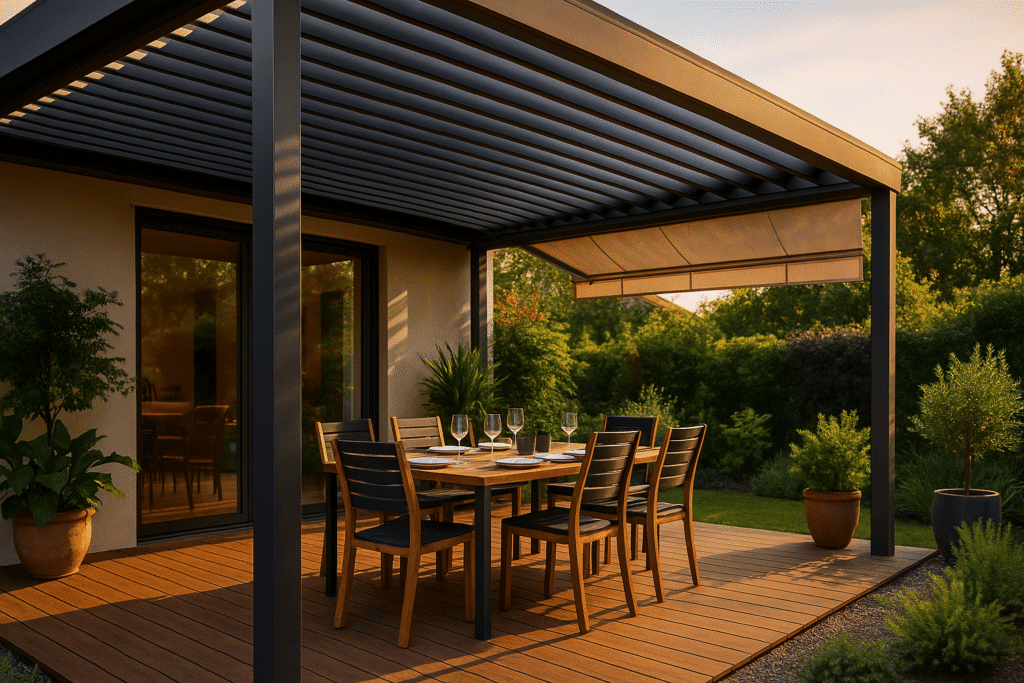
Types of Covered Outdoor Living Spaces I Looked At
Attached vs. Freestanding
First decision: Should it be connected to the house or separate?
- Attached feels like a room extension. Great if you want easy access from the kitchen.
- Freestanding gives you more design freedom. Think cabana, garden nook, or a shaded retreat by the pool.
I went with an attached setup because I wanted it to feel like part of my home, not like I had to “go out” to get there.
Pergolas (with or without louvers)
Let’s talk pergolas. Classic look. Open beams. Minimal coverage, unless you add a louvered roof.
Modern pergolas can actually adjust their slats so you get full shade or open sky when you want it. I nearly went with one of these, but motorized versions can run $8K–$20K fast.
Best For: People who want style, airflow, and adjustable sun protection.
Pavilions
This is where things get solid, literally. A full roof, posts, and no sides unless you add curtains or panels.
I saw one neighbor install a cedar pavilion with string lights and a fire table, and it looked like a five-star resort.
Best For: Full shade and weather protection with zero hassle.
Patio Covers
This is what I actually went with. A fixed-roof cover over an existing patio slab. It was cheaper than building from scratch but still gave me everything I wanted: coverage, lighting, fans, and space to eat and relax.
Cost Range: $4,000–$14,000 depending on size and materials.
Awnings (Retractable)
These are perfect if you want shade some days but still like having open sky. Motorized versions are smooth, but the wind can mess with them. You’ve been warned.
Best For: Flexibility and budget-friendliness.
Screened-In Porches & Sunrooms
Once you go screened-in, you’re committing. This is almost like adding a room to your house.
I considered this, but I wasn’t ready for the permits or cost (hello $25K+ for a decent build).
Best For: People who want to use the space year-round or keep every bug out.
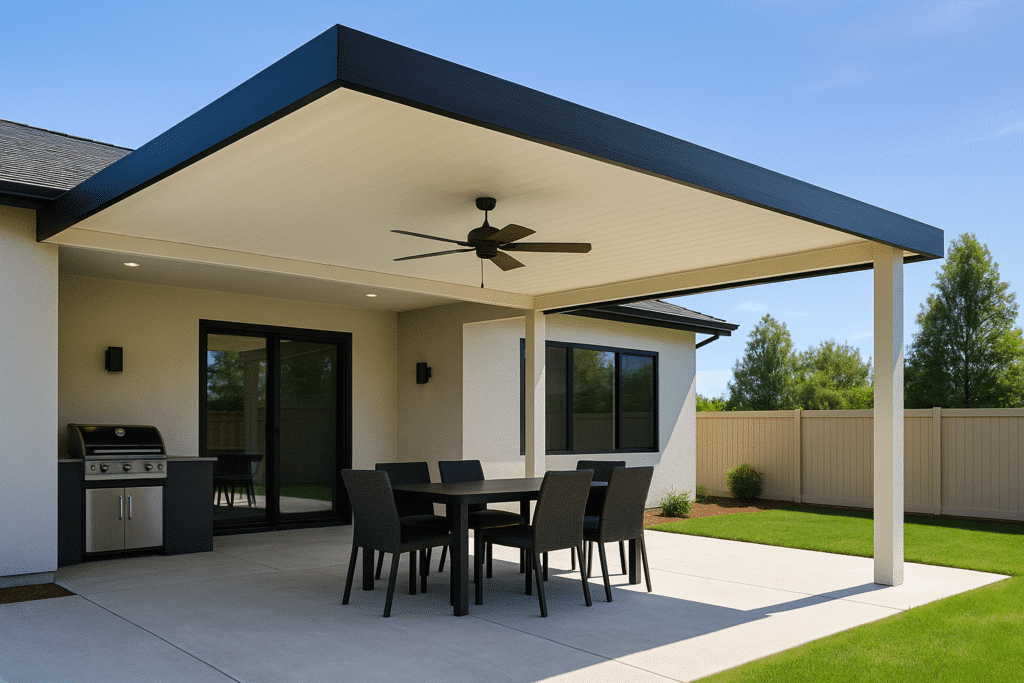
What to Add to Covered Outdoor Living Spaces (If You Want to Actually Use Them)
A roof is only the beginning. Here’s what made my space usable day and night, rain or shine.
✅ Lighting
I added dimmable LED can lights and a pendant light over the table. You don’t want to be fumbling around with a flashlight at 8PM trying to serve guests or clean up dinner.
✅ Ceiling Fan
Game changer. It moves air, keeps bugs away, and makes hot days tolerable. Mine cost $200 at Lowe’s and was worth every penny.
✅ Outdoor Heater
I live where winters don’t mess around, so I got a propane patio heater. Now I can actually use the space 9–10 months a year.
✅ Outlets
Plug in your laptop. Charge your phone. Run a speaker. Install a fan. Just do it.
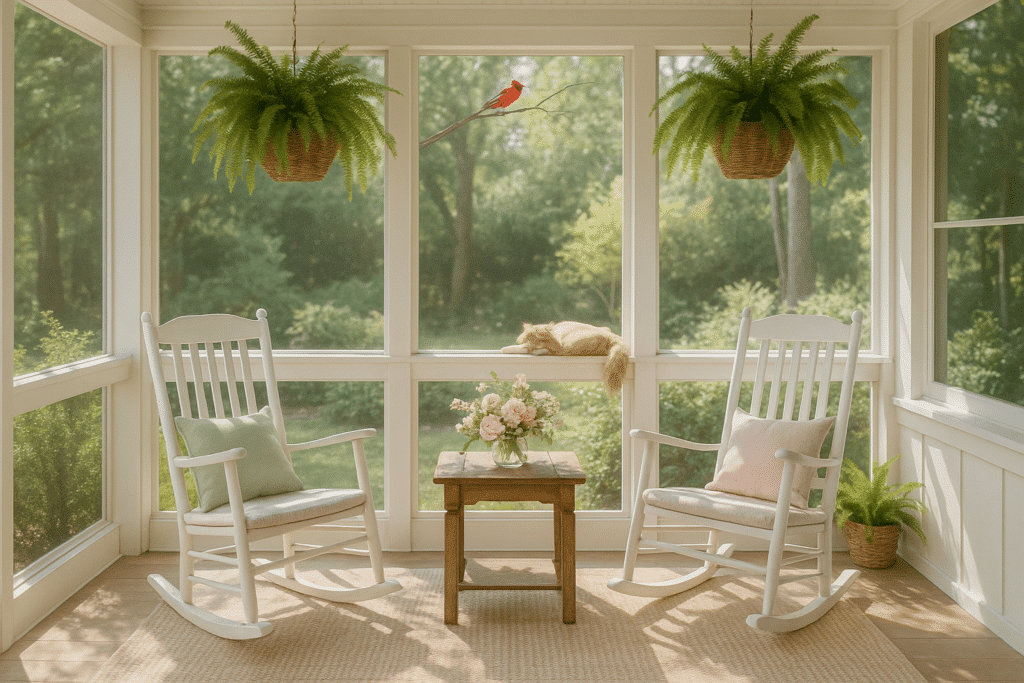
Covered Outdoor Living Spaces on a Budget
You don’t need to spend $30,000 to get a killer setup. Here’s how to keep things tight without it feeling cheap.
1. Use What You’ve Got
Have a concrete patio slab already? Build a patio cover over it instead of starting from scratch.
2. Stick to Simpler Materials
Pressure-treated lumber can still look great with the right finish. You don’t need exotic hardwoods or powder-coated steel unless you’re going for a certain look.
3. Skip the Fancy Rooflines
A simple shed roof is cheaper than a gabled one, and it still gets the job done.
4. Add Features Later
Start with the structure. You can always add fans, heaters, curtains, or lighting as your budget allows.
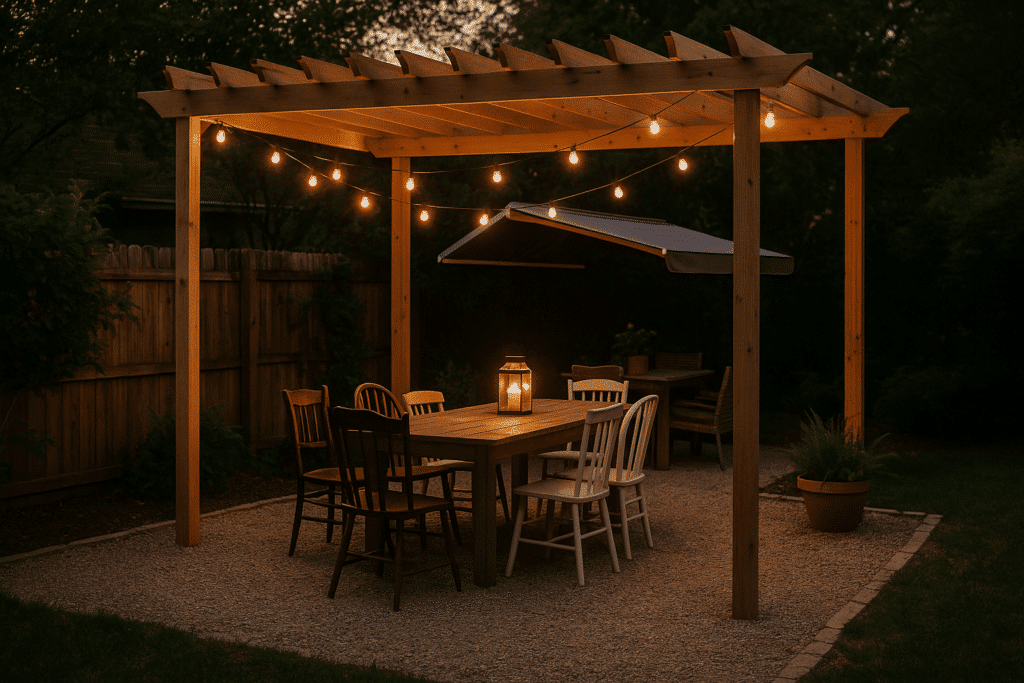
How Much Do Covered Outdoor Living Spaces Really Cost?
This was the hardest part to wrap my head around. Here’s what I found from comparing quotes and real contractor pricing.

| Type | Average Cost |
|---|---|
| DIY Canvas Shade | $200–$500 |
| Wood Pergola (No Louver) | $1,500–$6,000 |
| Louvered Pergola | $10,000–$20,000 |
| Basic Patio Cover | $4,000–$12,000 |
| Screened Porch | $12,000–$30,000 |
| Pavilion | $10,000–$25,000 |
Note: These costs are for mid-sized projects (12’x16’ or so). Bigger = more money.
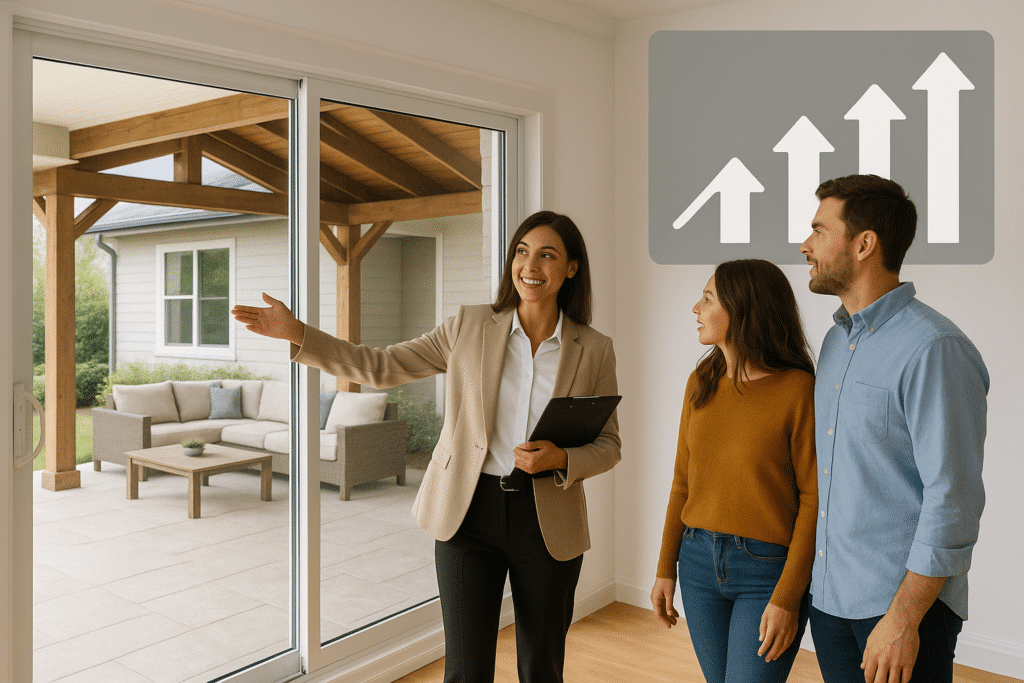
ROI of Covered Outdoor Living Spaces
This part surprised me.
- Wood decks can return 70–80% of their cost in resale.
- Patio upgrades with covers see 30–60%.
- Fire features? They average a 78% return and boost perceived value.
It’s not just about the money. Buyers love these spaces. They imagine hosting parties, relaxing with a book, or having a second “living room” outdoors.
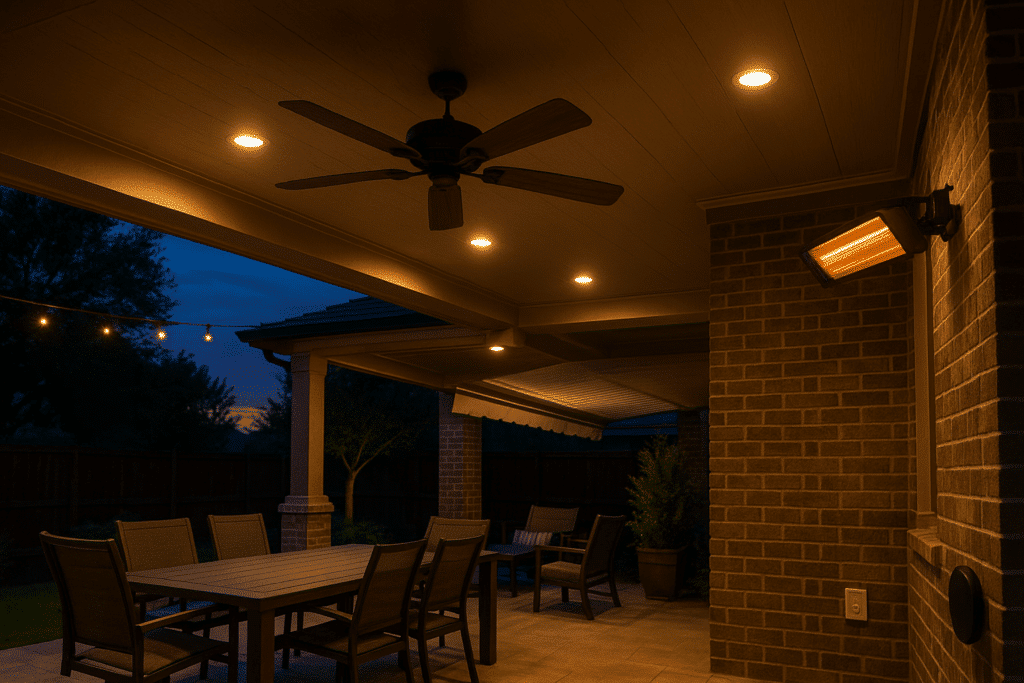
Real Life: What I Wish I’d Known Before Starting
- Permits matter. Even a simple roof can require one. Check first.
- Drainage counts. Make sure your cover doesn’t flood your patio when it rains.
- Shading changes everything. A well-placed structure can actually lower indoor cooling costs.
- Lighting is not optional. If you want to use it after 6PM, install lights.
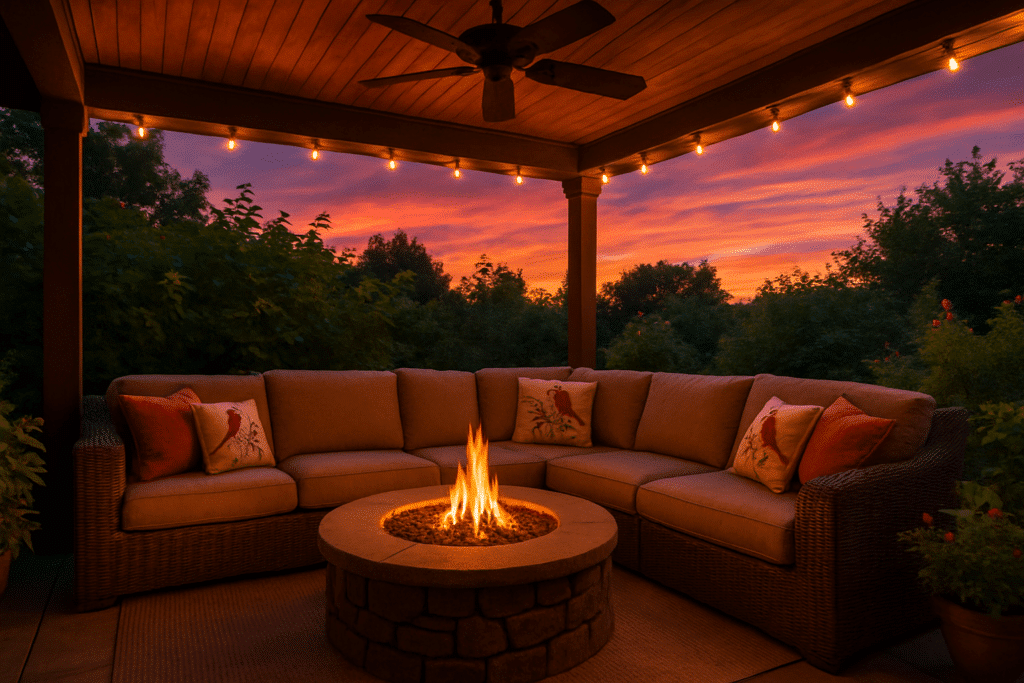
FAQs About Covered Outdoor Living Spaces
What’s the cheapest way to get covered outdoor space?
A canvas shade sail or a DIY pergola kit can cost under $1,000. Just know it won’t last as long or offer full weather protection.
Does a covered patio add home value?
Yes. A quality build with solid materials boosts resale value and increases how often buyers use your outdoor space.
Can you build a covered space without a permit?
Depends on your city and the size. Anything attached or with a permanent roof usually needs one. Always check local code.
What size is best?
12’x16′ is the sweet spot for a dining table and a seating area. Go bigger if you want zones (like a grill zone and lounge area).
Is it worth adding a fan or heater?
100%. These two things made the space usable way more days per year.
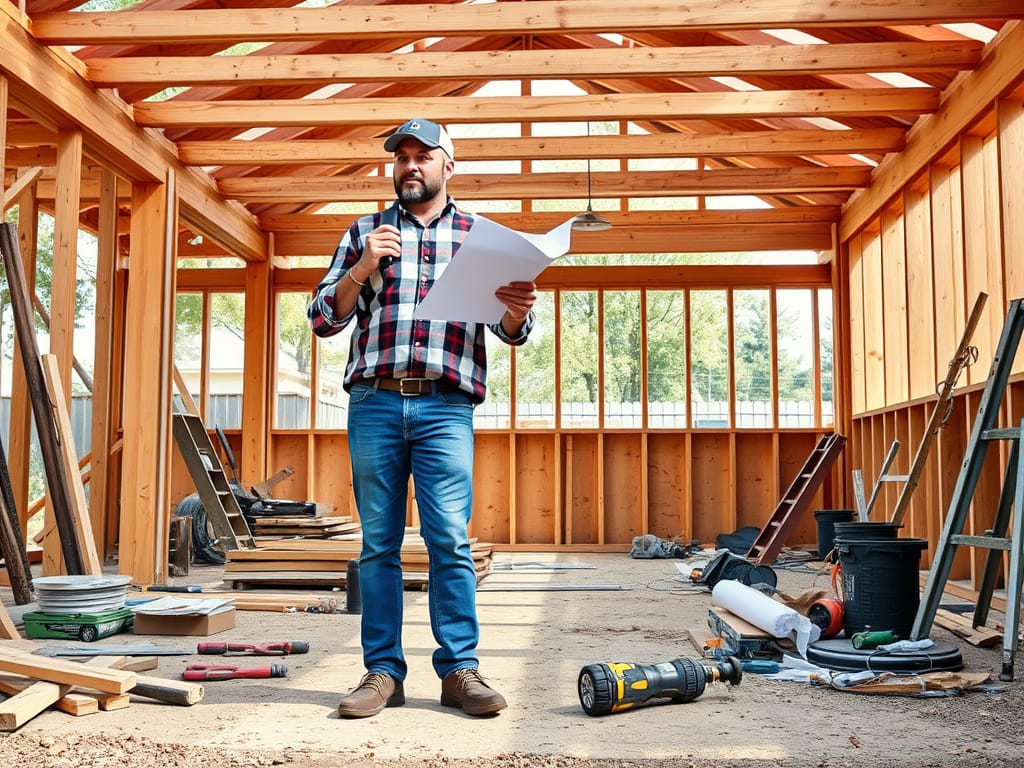
Final Thoughts: Covered Outdoor Living Spaces Are Worth It
I’ll be honest, I didn’t expect to use this space as much as I do. But it’s where I eat, work, host friends, and hang out with my dog. It’s the best square footage I’ve added to my house without touching the foundation.
If you’re even thinking about building one, do it. Just keep the structure simple, plan for how you’ll use it, and make sure it’s something you’ll actually enjoy being in.
Covered outdoor living spaces aren’t just a trend. They’re a smarter way to live in your space without needing more house.
